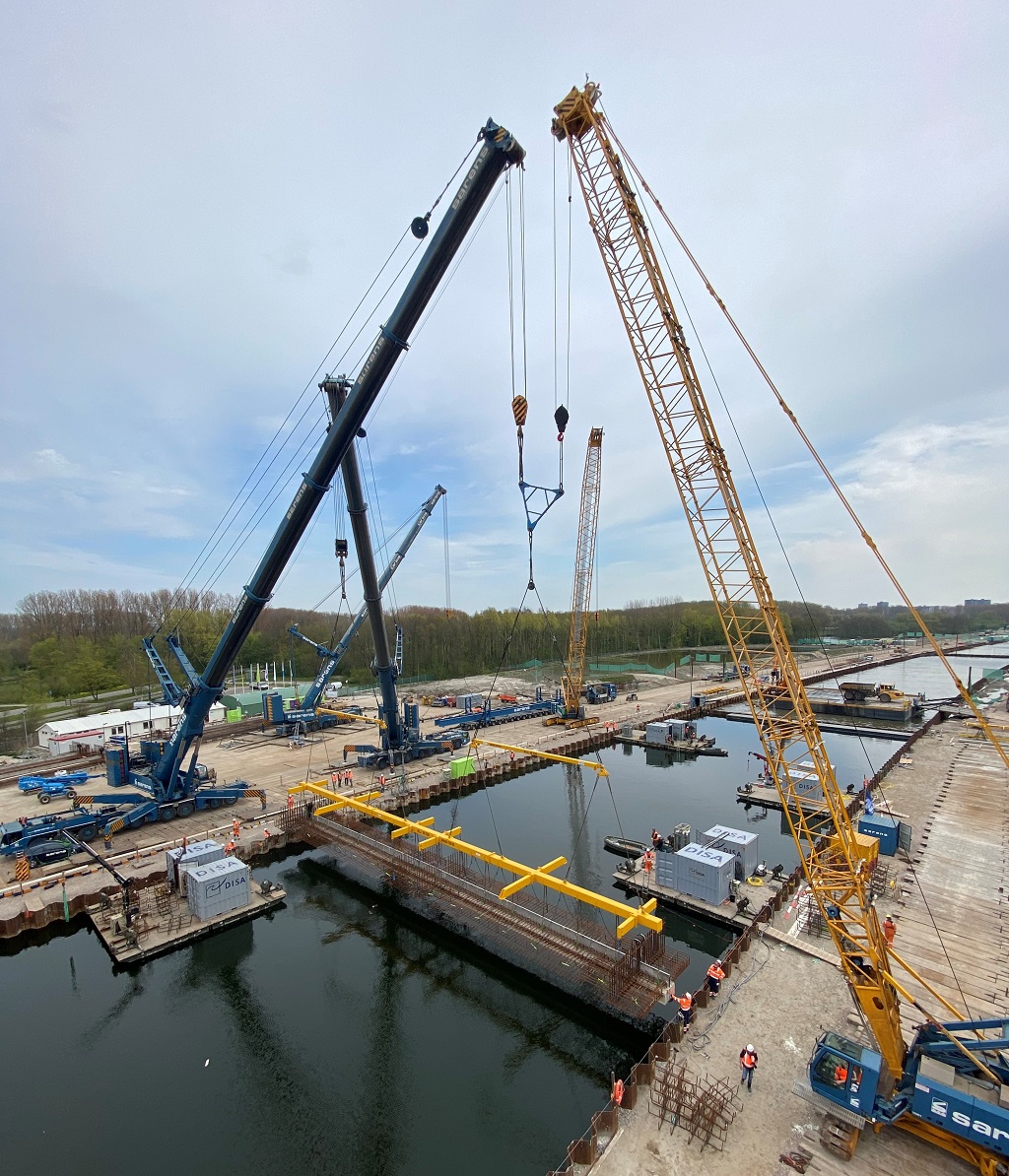Major Tunneling Project In The Netherlands
Sarens loads, transports, and lifts concrete dilatation beams in Rotterdam, the Netherlands.
This past December, Sarens was involved in a major tunneling project in Rotterdam in The Netherlands. The project involved the construction of an 11km highway with a 2.2km tunnel. The tunnel was made on the spot and deepened into the landscape. 44 concrete dilatation beams had be placed below groundwater level in the 2.2 km long tunnel floor. Every dilatation beam was prefabricated on two fabrication areas on-site.
Sarens performed the loading, transport on a platform trailer, and triple-lift of 44 individual concrete dilatation beams. Each beam weighed 77T and was 33.1m long, 1m wide, and 57cm high.
The equipment used for the project were:
- 16-axle K25 platform trailer with push-pull truck
Customised strong back frame
Customised lifting beam with 32 + 16 lifting points
AC700 HaSSL with 55.5m main boom and 160T counterweight
AC500-2 HaSSL with 42.5m main boom and 180T counterweight
Sennebogen 3300-R with 41.1m main boom and 37.7T counterweight
Lifting triangle of WLL 250T
The team faced a number of challenges but with precise planning and execution the team was able to address them:
- The maximum ground pressures of the cranes could not exceed 40kN/m2. Therefore large azobe platforms had to be made for the telescopic cranes with long steel mats on top where finally the crane mats were laid leading to a larger lifting radii.
The dilatation beams were very fragile because of their length and small height. During transport and lifting the beams were not allowed to bend more than 18mm. Every beam also had 2.25m wide reinforcement steel sticking out on both sides of the beam, which had to be kept in place both during transport and lifting. Several customised tools were designed for the beams.
Because of the large lifting radius of the AC700, a crawler crane on the other side of the cofferdam had to take over part of the weight to reach the last meters. As a result the tandem lift was modified into a triple lift.
Finally, the dilatation beams were placed in their final location under water. According to the Sales Manager, Operations, Jeroen Blok, “Our very skilled and dedicated crane drivers executed the complex lifting job under water, in combination with the coordination of the lifting supervisor who had radio-contact with the divers too.” He adds, “The complexity of this project was greatly determined by the dimensions and weight of the prefabricated and vulnerable dilatation beams but our team completed the project with excellence.”
